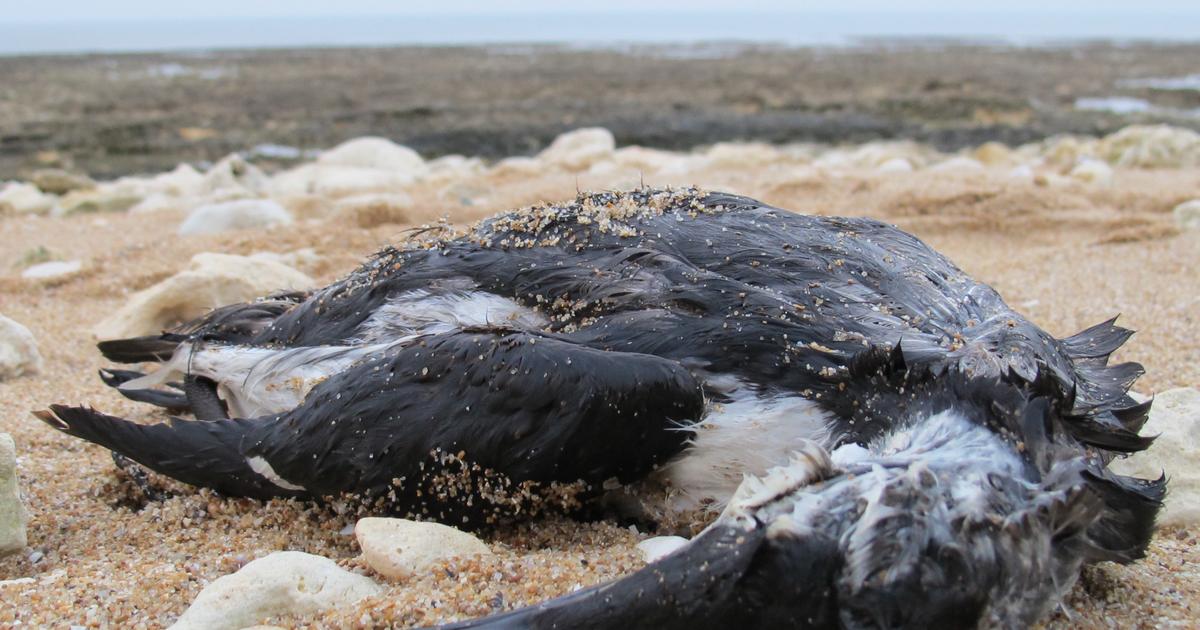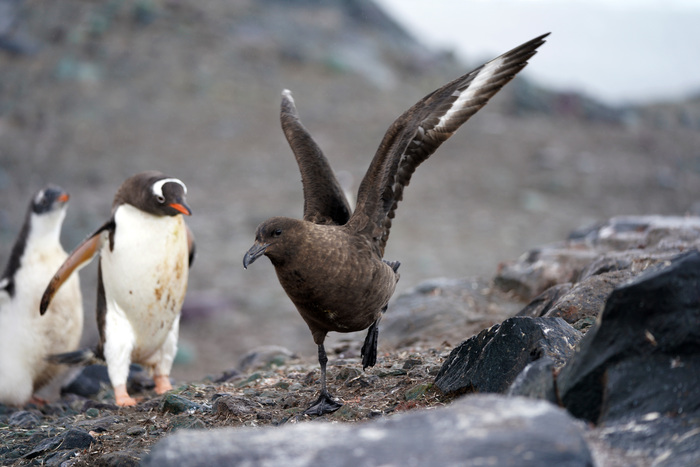If anyone has ever imagined a laboratory of horrors, it must be quite similar to that of Vivotecnia (Madrid), of which on April 8 the animal rights NGO Cruelty Free International released several clandestinely recorded videos: monkeys, dogs, rabbits, pigs and mice being immobilized, shaken, ridiculed, terrified. Two weeks ago, on May 29, a demonstration of hundreds of animal supporters asked from the capital that the 884 animals that continue to live in the laboratory, which remains closed while the facts are investigated, be released. The impact has been collective. And perhaps one of the causes of the commotion is that, as much as this laboratory went very far in its abuse, we are aware that the rest of the laboratory animals do not have a peaceful life either.What went wrong at that center is yet to be determined. But it has reopened old questions that have been around us for a long time: Is it ethically acceptable for us to harm animals in our research? If these are sentient beings, should we endow them with rights and cease experimentation on them?
In 2013 the European Union introduced into legislation the principle of the three Rs (replacement, reduction, refinement), which seeks to reduce the use of animals in science. However, beyond improving the quality of life of these animals, its application is not achieving its final objective, since progress in alternative methods that replace animals is extraordinarily slow. On the other hand, several European countries, Spain among them, do not invest a single euro in developing alternative methods. Do we really want to reduce the use of animals in science?
Concern about how we treat animals goes a long way.
The great German philosopher Immanuel Kant argued in the 18th century that human respect for animals must be born out of respect for ourselves.
Kant ate meat and did not dispute its use in science, but pointed out that by loving ourselves we must refrain from causing gratuitous suffering to these beings.
Animal rights rally in London in January 1925 Hulton Deutsch / Corbis via Getty Images
The academic debate on animal ethics did not begin until 1975, about half a century ago, with the book
Animal Liberation
, by the philosopher Peter Singer. The Australian, who is also a lawyer, pointed out that humans are speciesists - we discriminate against other living beings for being of a different species from ours - and affirmed that animals, as suffering beings, have the right to protection. Eight years later, the American philosopher Steve F. Sapontzis added that, in addition, the experience of pain in them is even greater, more terrible than in our case, because they do not understand why they are experiencing pain (
Morals, Reason and Animals
, 1983, without translating into Spanish).
And if some thinkers are close to animals, others mark the differences with them, such as the philosopher Roger Scruton, who believes that these are not subjects of law (“only humans have duties, and therefore, only humans have rights ”), Or Carl Cohen, who points out that they lack free moral judgment and, therefore, do not have rights and cannot have them.
In the last 20 years, the protection of animals has taken many steps forward, but many fronts remain open.
"Currently, the use of animals is considered ethically always acceptable if there is a benefit for the human being," sums up the Chilean Fabiola Leyton, an expert in Philosophy of Law and professor at the University of Barcelona.
"The balance tips in each case towards humans."
Images of animal testing have long been nearly shielded.
Those that have been leaking do not calm down.
Rabbits with pus in the eyes.
Modified mice with one ear on the back.
Dogs with shaved and reddened skin.
Monkeys out of their minds with perforated skulls… Half of the animals used in European laboratories are genetically modified.
15% have a hard time since they are born, because the genetic modification that is made to make them resemble humans in some way causes them severe discomfort, according to Cruelty Free International.
Dog portrayed by a Vivotecnia employee in Madrid.
The laboratory is currently closed by order of a judge.
Sensitivity to animal suffering is strongly attached to many stomachs. Products that do not harm animals are quite a market niche (59% of Europeans are willing to pay a higher price for animal-friendly food products, Eurobarometer 2016). Until five years ago, in Spain the scientific community was reluctant to speak publicly about the use of living beings in research, as it ran headlong into the disappointment of the general public. This setback has been present since the beginning of the investigation. Already at the end of the 19th century, Claude Bernard, who is considered the father of modern physiology (he discovered, among other things, the digestive function of the pancreas), experienced disgust within his home: his wife,She was horrified by his methods (she was opening the animals at that time even without anesthesia), together with her two daughters she founded a shelter for abandoned dogs and cats as a kind of compensation for her husband's actions (they ended up separating).
In 2016, the Confederation of Scientific Societies of Spain signed a transparency agreement on the use of animals in scientific experimentation, the objective of which is to communicate when, how and why they are used and what benefits are derived from this practice. On June 2, several institutions joined, 146 already signing the agreement, among which there are universities, research centers and companies. The most widespread answer they offer is to affirm that if we want to continue advancing as a society, experimentation with animals is inevitable (to develop the vaccine against the coronavirus, without going any further). Many times the following tagline is added: "But in each case we try to reduce animal suffering and, whenever possible, alternative methods are used."
The tagline refers to the aforementioned principle of the three r's - replacement, reduction and refinement - which was developed in 1959 by two British men, the zoologist and psychologist William Russell and the microbiologist RL Burch.
According to both, the "humanitarian" problem in the use of animals in research lies in the severity of the treatments they undergo and the stress that is caused.
So they proposed putting these principles into operation in each case, in the following order of importance: replacing all the procedures that can be changed with others in which it is not necessary to use animals (replacement);
use the smallest possible number (reduction);
and apply the most appropriate technique in each case to avoid damaging the animal more than necessary (refinement).
Pig portrayed by an employee of the Vivotecnia laboratory in Madrid.
These days the National Center for Biotechnology, attached to the CSIC, is testing mice to test one of the possible vaccines against the coronavirus that are being investigated in Spain. Rodents are genetically modified so that the virus causes the same effects on them as it does on us. When they provide the first clues, it will be the turn of the crab monkeys, and finally, the vaccine will be tested in humans. Isabel Sola, co-director of the project, affirms that there are models of the human lung, but that they are not useful. "We need to see the protection that a body develops," he says. “You have to have complete animals to see what is the mechanism by which the virus causes inflammation, to see the edema in the lung. We have no alternative ”.
Finding other options is sometimes not complex. It has been discovered, for example, that using the eyes of dead chickens or cows the same information is obtained in some experiments as by inflaming the eyes of live rabbits. But the normal thing is that the alternatives are much more complex and expensive to achieve. Cell cultures, research with embryos - of zebrafish, frogs or worms - that are sacrificed before they have sensitivity, tiny replicas, like the one mentioned by Sola, of organs that behave (more or less) like our heart, lung, kidney ...
The three Rs were slow to become popular, but the principle has already been adopted, in addition to the European Union, in most of the US states or in the World Organization for Animal Health. Its application has had very positive effects on animals used in research, as it has improved their quality of life (it is required that they have toys, space to move or adequate food at their disposal). But has its use decreased? Have laboratory animals really been replaced by alternative treatments?
Around 115 million animals (2012 data) are used for research.
In the European Union, in 2017 (latest data available) 9,580,000 “uses on animals” were made (some of them were used more than once), data that remains with little change over time.
If we bring the magnifying glass closer to Spain, we will see that in 2009 1,400,000 animals were used.
Two years later there is a significant drop (35%).
However, in the last six years there has been little change in the figure, which remains fairly constant.
Mice portrayed by an employee of the Vivotecnia laboratory in Madrid.
Despite the fact that European legislation specifies that the ultimate goal of the three Rs is to stop using animals “as soon as scientifically possible to do so”, the data do not reflect a considerable reduction in their use in Europe. Two years ago Kathrin Herrmann, an animal welfare veterinarian who worked for 10 years from Berlin supervising the treatment of animals in laboratories, decided to bring together scientists, legal experts, philosophers and activists in the book
Animal Experimentation : Working Towards a Paradigm Change
(Animal experimentation: working towards a paradigm shift, Human Animal Studies, 2019). "Many times I experienced the limitations that exist to protect animals due to the way things are done: in a decentralized way, with few personnel and with very limited resources," he says by phone. Herrmann points out that the use of alternative techniques that substitute animals has been, in his opinion, relegated.
Why does this happen? One reason is that it takes a lot of funding to find methods that work. Only six European countries - Austria, Belgium, Denmark, Finland, Germany and Sweden - invested 6.7 million euros (2014) in alternative techniques (the United Kingdom, today outside the EU, invested 11 million for the same item). Spain, for its part, contributes zero euros to alternative research techniques. "The Administration has considered that it is not its function," says Guillermo Repetto, president of the network for the development of other research methods. "There is a European directive that forces it to invest in alternative methods and that it will ask for explanations for it."
The European Union, which already in 2009 banned animal research in the production of cosmetics, is the one who is promoting the search for alternative methods in the region. Between 2012 and 2016 it contributed 350 million euros to the task and this year it has collaborated with 60 million for three projects. Is it a sufficient amount? Katy Taylor of Cruelty Free International says no. The funding for developing alternative methods, he points out, is minimal: 0.12% of the total science budget of the European Union (80,000 million euros). “It is not given the importance it has. Do not care. Both the EU and the scientists have endorsed the principle of the three Rs and have stopped asking ethical questions about the treatment of animals. We are stagnant ”.
Should we forget about the three R's principle? More and more thinkers and experts say yes. Charlotte E. Blattner, Harvard-trained attorney and author of Animal Labor:
A New Frontier of Interspecies Justice?
(Animal work: a new frontier in inter-species justice ?, Unpublished in Spanish, Oxford University Press, 2019), affirms that it would be the most reasonable. "It has become outdated," he says, "because it keeps us immobile." He defends that the only "salvation" of animals is that we grant them their own rights: to their lives, as well as to their physical and mental integrity. "Only a paradigm shift in the laws that affect research animals will stop their use in experimentation." Herrmann agrees and states that the Burch and Russell principle has become a kind of public wash for those who do research with living beings. The political intention to reduce and replace animals in science, he states by email, has always been “just that, an intention.It is urgent that we make a radical paradigm shift in the commitment of politicians, in legislation and from the scientific community ”.
The question that remains to be answered is: how far are we willing to go normatively and how much money are we willing to pay so that the animals stop suffering for us?
Subscribe here
to the weekly Ideas newsletter.






/cloudfront-eu-central-1.images.arcpublishing.com/prisa/IZJDQQOGJJAMDDSSNIK4QJGIOE.jpg)

/cloudfront-eu-central-1.images.arcpublishing.com/prisa/43V2S254JJFBLF2IDRP744FBU4.jpg)